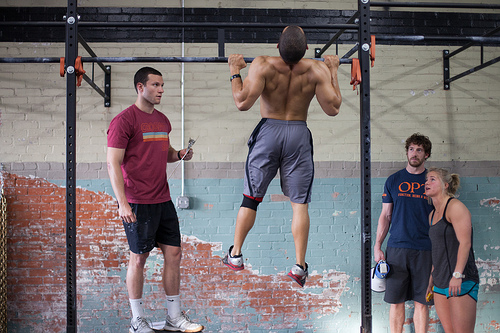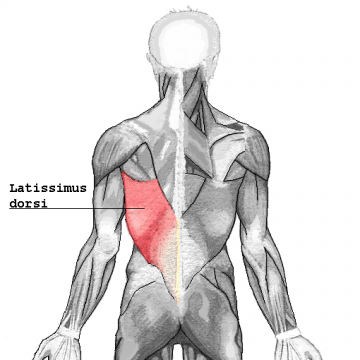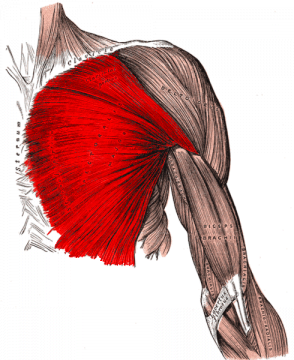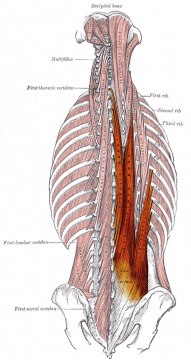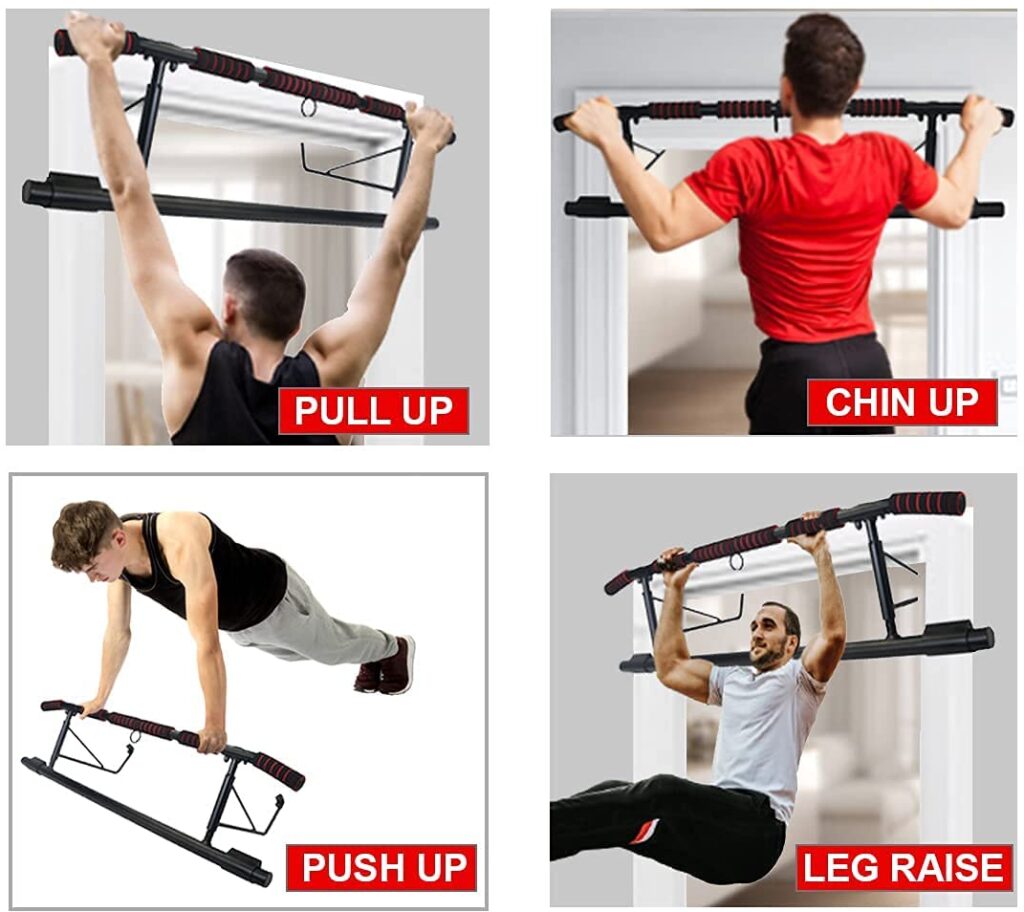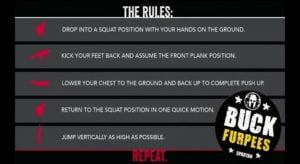Wanna do more pullups? It doesn’t matter if you can crank out 18 pullups or zero. This training guide shows four proven ways to help you do more pullup in a short time.
My Story: Pullup beginner before I joined the army
Before my army conscription in 2010, I had to do at least eight pullups to qualify for the enhanced recruit intake. But, back then, I couldn’t even do one.
So, I trained for two months.
Within two weeks, I did my first pullup. Gradually, my pullup reps rose to eight — just in time for the test — and I was accepted in the enhanced batch of recruits.
To be honest, my progress was slow. I couldn’t find reliable pullup guides on the internet for total beginners. So I combined whatever scraps of advice I got.
Perhaps this is you right now. Stop searching and get started!
Difference between Pullups vs. Chinups
Let’s first clarify the differences between pullups and chinups.
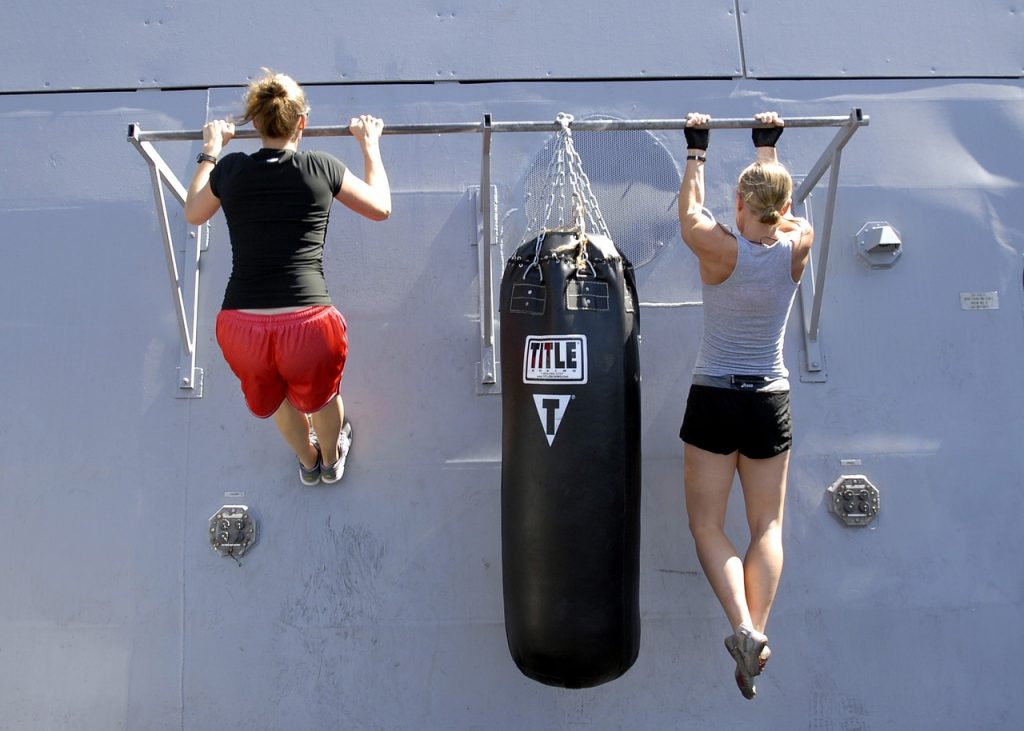
Similarities in Both Exercises
Both pullups and chinups are performed by first hanging on the bar, and then pulling yourself up so that your chin goes above the bar. Your arms should be shoulder width apart in both exercises.
Many callisthenics athletes pull high enough for their upper chest to touch the bar.
As expected, the seven muscles worked for both the pullup and chinup exercise are the same.
But, there are a few key differences…
Differences – Grip and Intensity in Each Muscle Group
Although both exercises use the same movements and similar muscle groups, the forearm grip technique (i.e. overhand vs underhand) is different.
Because of this difference, the same muscles groups are exerted at a different intensity for pullups (see the table below). This makes pullups tougher to do.
| Pullups | Chin Ups | |
|---|---|---|
| Grip | Overhand/Pronated Grip (palms facing forwards) | Underhand/Supinated Grip (palms facing you) |
| General intensity of individual muscles worked | Pullups work the center of your upper back at greater intensity. | Chinups relegate the movement to your chest and biceps (arms). Hence, the higher intensity in those areas. |
| Intensity of Lower Trapezius | Higher intensity | Lower intensity |
| Intensity of Pectoralis Major | Lower intensity | Higher intensity |
| Intensity of Biceps Brachii | Lower intensity | Higher intensity |
Bottomline: Pullups vs Chinups
So if you want a complete back exercise that’s more challenging, do pullups. Because chinups rely more on your biceps and pecs, they are easier to do. Besides that, there are no other differences in muscle groups worked.
I prefer pullups to chinups. I’d rather do dips and push-ups for biceps and chest.
Ultimately, whether you want to increase chinups or pullups, the training is the same.
What Pullup Equipment Do You Need?
1. Pullup Bar
Pullup bar facilities are everywhere (at least, in my area). You can even visit your gym.
However, if there are no fitness facilities near your home or office, consider getting a doorway pullup bar. Convenience is the key to succeeding in a new training regime.
If you have to take great pains just to find a pullup bar every day, you’ll lose motivation and give up. When the pullup bar is right at your door, you have no excuses to avoid training.
Every time you pass the doorway, do pullups! Need a break from work (or studying)? — more pullups.
Perfect!
2. Resistance Bands
If you are going to do assisted pullups (this section), you need resistance bands. Alternatively, use the assisted pullup machine at the gym or ask a friend to help you out.
Again, if you want to train in assisted pullups daily, consider getting the resistance band. You can use the bands for other exercises also.
Recommended:
Pullup Assistance Bands System
Designed by NASM-CES Strength Coach to provide extra support and resistance during intensive workouts

Note: If you can already do three pullups or more, you don’t need to do resistance band assisted pullups.
3. Your Body
This is a no-brainer. You need your body and make sure you aren’t injured. If you have a pre-existing injury, get advice from a doctor first.
How to Do the Pullup Correctly?
Learning to perform pullups correctly will ensure you progress in your callisthenics training quicker and save you from unnecessary injuries. These are some key points.
Grip Position & Method
Grip the bar shoulder-width (or slightly further) apart. The Bar Brothers recommend in their street workout program a full grip, where your four fingers curl around the bar and touch your thumb.
Alternatively, the grip that I use involves curling the four fingers and the thumb on the bar.
Active Hang
Hang in an active position before even beginning your pullup. You do this by engaging your scapular and pulling your shoulder blades down.
Under no circumstance should you switch to the passive hang when performing consecutive pullups. Doing so increases the chance of wear-and-tear injuries in the shoulder.
Find out exactly how to activate your shoulders and hand in this section (refer to 1. Active Hang).
Full Range of Motion
Your arms should start fully extended at the bottom position. Then, pull yourself up so that the chin goes above the bar; it’s even better if your chest nearly touches the bar. Repeat.
Controlled Movement
No kipping or using of momentum. That’s cheating unless you’re using it to teach your body the motion of the pullup. This is a useful learning tool but stop kipping the moment you manage your first pullup. Your movement should be controlled.
The Four Proven Ways to Do More Pullups
How to Do a Pullup for Beginners? — And Also Increase Reps (#1 & #2)
Can’t do one pullup? You need training in two things — upper body strength and pullup muscle coordination.
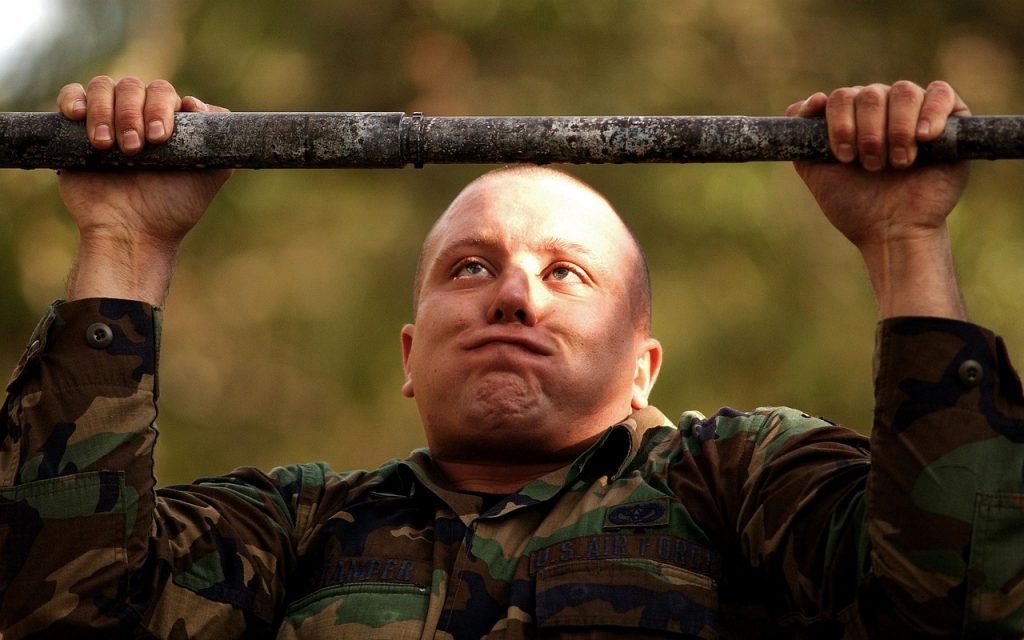
The below two ways will help. You’ll do your first pullup in no time.
Proven Way #1: Grease the Groove — Do More “Pullups” Every Day
Without knowing it I had used the Grease the Groove method by Pavel Tsatsouline for my early pullup training. Several times each day, I visited the neighbourhood fitness corner just to attempt pullups.
In the beginning, I barely did half of a pullup. But I just cranked out whatever I could. When I was tired, I hung on the bar for as long as I could.
So this is the single-most important method for increasing pullups — even if you can do zero. To do more consecutive pullups, you need to train more in pullups. You need to be obsessive. You need to put in more time.

But do not train to failure. It’s about practising the movement and letting your nervous system make it perfect.
As mentioned, for convenience, get a doorway pullup bar. Every time you walk past it, you’ll be tempted to try pulling up. With more attempts, you’re teaching your body to make subtle adjustments.
List of exercises for “greasing the groove”
Doing more pullups every day is a solid strategy. But what if you can’t even do one?
Jerk your body up all day long, with unnoticeable progress?
No. That’s discouraging and boring.
Do this list of pullup strengthening and coordination exercises. Although you aren’t yet doing pullups, you’ll get there with these low-level progressions.
1. Active Hangs
Active hangs are performed by hanging on to the bar while keeping your scapular activated. Make sure to pull your shoulder blades down and together at the back.
So, how do you know whether you are in the passive or active position?
If your shoulders are shrugged up to your ears when hanging, you’re in the passive position. In an active position, your shoulder blades are pushed down and together. There should be some distance between your shoulders and ears. Also, your chest would be extended slightly forward.
How do you incorporate this into your pullup regime?
Hang with your shoulder blades activated for 10 to 60 seconds (depending on your level of fitness). This helps your body learn how to correctly engage your back muscles. It also increases the time you can grip a pullup bar.
In effect, you’ll gain the grip and muscles needed to do a pullup.
2. Scapular Pullups
This is similar to the active hang, except that there is a tiny movement at the back.
3. Negative Pullups
Jump and use the upward momentum to pull yourself up. Your chin should go above the bar. Then, slowly lower yourself down. Make sure that your shoulder blades are pulled down.
Doing negative pullups is one of the best ways to learn the pullup motion but in reverse. Instead of pulling yourself up in a negative pullup, focus on lowering yourself down slowly.
4. Halfway Pullups
Pullup as high as you can, lower yourself down, and repeat. This is also what the army deems as half-****ed pullups.
5. Inverted Rows (aka. Australian Pullups, Inclined Pullups or Inverted Pullups)
The inverted row can be done almost anywhere, even at home.
If you are training outside, use the parallel bars.
At the gym? Modify the Smith machine.
At home? Use a sturdy desk or dining table.
6. Assisted Pullups
These are the various ways you can perform assisted pullups.
Assisted Pullups Machine
Assisted Pullups with a training partner
If you have a training buddy, have them assist you with three to ten more pullups/chinups (only after you’ve performed the maximum number of unassisted pullups/chinups). Repeat the set twice with a 5-mins break in-between.
Avoid using the assisted pullups technique demonstrated in the video below. It is a safety issue.
By having your buddy hold your feet, you are risking injury. People have accidentally let go off the bar when exhausted and fallen face first onto the ground.
Assisted Pullups with Resistance Bands
If you wish to train at home, make use of your doorway pullup bar and hang the resistance band as shown in the video.
7. Chinups
As mentioned, chinups are easier to do than pullups because you are relying on the biceps and chest.

Remember… where pullups are performed with a pronated grip, chinups are done with a supinated grip (reverse or underhand-grip).
Try them out and you may be surprised. They ingrain the pull movement and help you progress on to actual pullups.
General Guidelines for your “Grease the Groove” training
Begin with the most difficult exercise of the bunch, and then move on to the easier progressions. DO NOT train to failure.
Also, make sure to switch between the exercises listed. Each exercise has its benefits.
- For a few times each day, do two to three sets of each exercise. Depending on intensity, take a 1 to 4-minute break between sets.
- Every hour, go to a pullup bar and get five to ten minutes of exercises done, the time includes resting between sets. If hourly isn’t possible, then every time you take a break. This is why having a pullup bar at your doorway (or nearby facility) is beneficial.
Never compromise your form in any of the exercises — unless you want to develop terrible injury-inducing habits. If you are too fatigued to engage the right muscles, do a lower progression of the exercise.
Again, greasing the grove does not mean training to failure!
After One-week of Training
When I was a beginner, I did max reps each hourly session. For example, if I did halfway pullups, it’d be until I could barely pull myself up. I then moved on to inclined pullups. When I couldn’t do that with proper form, I did active hangs.
You can do the same after your first week of trying out the exercises. Get your form right first.
Note: Take a look at Posey’s Marine Pull Up program (below) as it also caters to complete beginners.
Proven Way #2: Marines Pull Up Program by Posey
The Marine Pull Up Program by Posey is the only one that is completely friendly to complete beginners. This program is also effective enough that it is used at a Marines Corp Base.
Check out Posey’s program here.
Increasing Pullups – For People Who Can Do at Least One (#3 & #4)

This section lists pullup programs for people capable of doing at least one pullup.
I’ve linked to the workout details for each of the pullup program, instead of listing it here. After all, the original trainers explain it better.
Proven Way #3: Pull Up Push Workout

The Pull Up Push workout is a training regime by Stew Smith, a former Navy Seal. It is meant to blast your pullup reps through the roof in two-weeks.
You need to be able to do between three to ten pullups before embarking on this program.
If you can do five pullups and below, you are to perform an additional 25 pullups daily. If you can do more than five pullups, you are to perform an additional 50 pullups daily.
The additional pullups are to be done on top of your regular training program. Plus, it needs to be done as detailed in Stew Smith’s regime.
Follow the scheme detailed here, which explains what to do on odd days and even days for the two weeks. The last four days are designated for rest and recovery before you take a test.
Proven Way #4: The Fighter Pull Up Program by Pavel
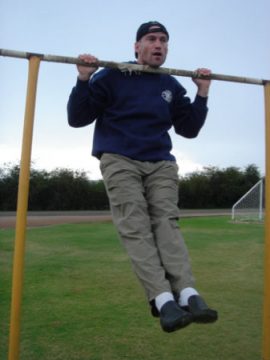
The Fighter Pull Up program is a thirty-day training regime that has been proven to double your reps. This is suitable for everyone – beginners and above.
These are the rough guidelines:
- Do 5 sets of pullups everyday
- After every five days, take a off day
- On the first session, do your maximum pullup reps for the first set. For every subsequent set deduct one rep.
Follow the details of Pavel’s pullup training regimen here. Yes, the same Pavel who advocated for Grease the Groove. He was also a fitness instructor in the former Soviet Union.
Do More Pullups in 30-Days Challenge
You need to be doing pull-ups every day rain or shine if you’re serious about your goal.
